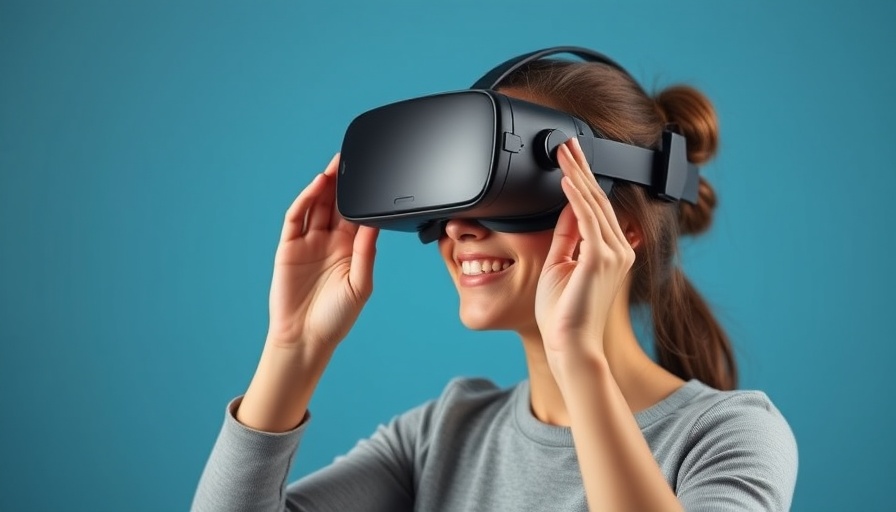
Understanding the Role of VR and AR in Stress Management
As stress seems to be an unavoidable part of modern life, the exploration of innovative techniques for stress management becomes increasingly important. Fortunately, emerging technologies such as virtual reality (VR) and augmented reality (AR) offer more practical approaches to managing stress through simulation in realistic situations. This is especially relevant for those who work in health care and wish to provide their patients with novel approaches to stress relief.
Breaking Down Barriers to Stress Relief
Traditionally, meditation and stress-relief techniques have been offered through smartphone apps that often remove users from real-life contexts. While calming, these experiences can create a disconnect from everyday scenarios that typically trigger stress. The recent project led by Anna Fang at Carnegie Mellon University represents a shift towards creating more applicable strategies, focusing on real-world stressors such as public speaking and social interactions.
The Science Behind VR/AR Stress Simulations
The findings presented at the Association for Computing Machinery Conference on Human Factors in Computing Systems (CHI 2025) reveal that 19 participants successfully engaged with the technology. They reported feeling a stronger sense of preparedness to handle real-life situations that typically induce stress. By incorporating VR/AR simulations, practitioners can guide patients through exposure therapy in an environment that closely mimics reality.
Portable Resilience: The Advantages of VR/AR Tools
One of the significant advantages of VR and AR technologies lies in their accessibility. Users can engage with stress-management techniques anytime and anywhere. The technology allows practitioners to extend patient care beyond the clinical setting, enabling continuous practice of stress-relief strategies. This kind of support could significantly improve patient engagement and outcomes.
Building Confidence Through Practice
The central thesis behind Fang's research is the notion that practice breeds confidence. The first step in overcoming anxiety-inducing scenarios is often simply building one’s comfort level. VR and AR offer users the unique ability to rehearse interactions—the same principle that performers have harnessed for ages—in a safe and controlled manner. This kind of repetition can familiarize individuals with the feelings associated with stressful environments, thus alleviating anxiety.
Leverage Technology for Better Patient Outcomes
Wellness practitioners are continuously searching for methods to improve therapeutic efficacy. As concierge health practitioners, it is crucial to position oneself on the cutting edge of emerging medical practices and to utilize these tools to help patients find effective coping mechanisms. By considering the integration of VR and AR into patient programs, practices can create more engaging, personalized care plans that resonate with their patient’s experiences and ultimately encourage adherence to treatment.
Future Insights: The Promise of VR and AR in Healthcare
The trajectory of VR/AR applications in healthcare appears promising, with researchers and developers working tirelessly to expand capabilities and enhance user experiences. As healthcare technology evolves, these platforms are expected to offer even more customized experiences tailored to individual patient needs. Thus, staying abreast of developments in these areas is paramount for any health practitioner interested in optimizing patient care.
Take Action: Embrace Cutting-edge Solutions
The path to integrating VR and AR into health practices doesn’t have to be complex, nor does it require extensive training. Rather, the time to act is now. Engage with the technology, stay informed about new studies, and consider incorporating VR/AR tools into your practice. As the landscape of mental health care continues to shift, those who adapt will better serve their patients.
 Add Row
Add Row  Add
Add 






Write A Comment